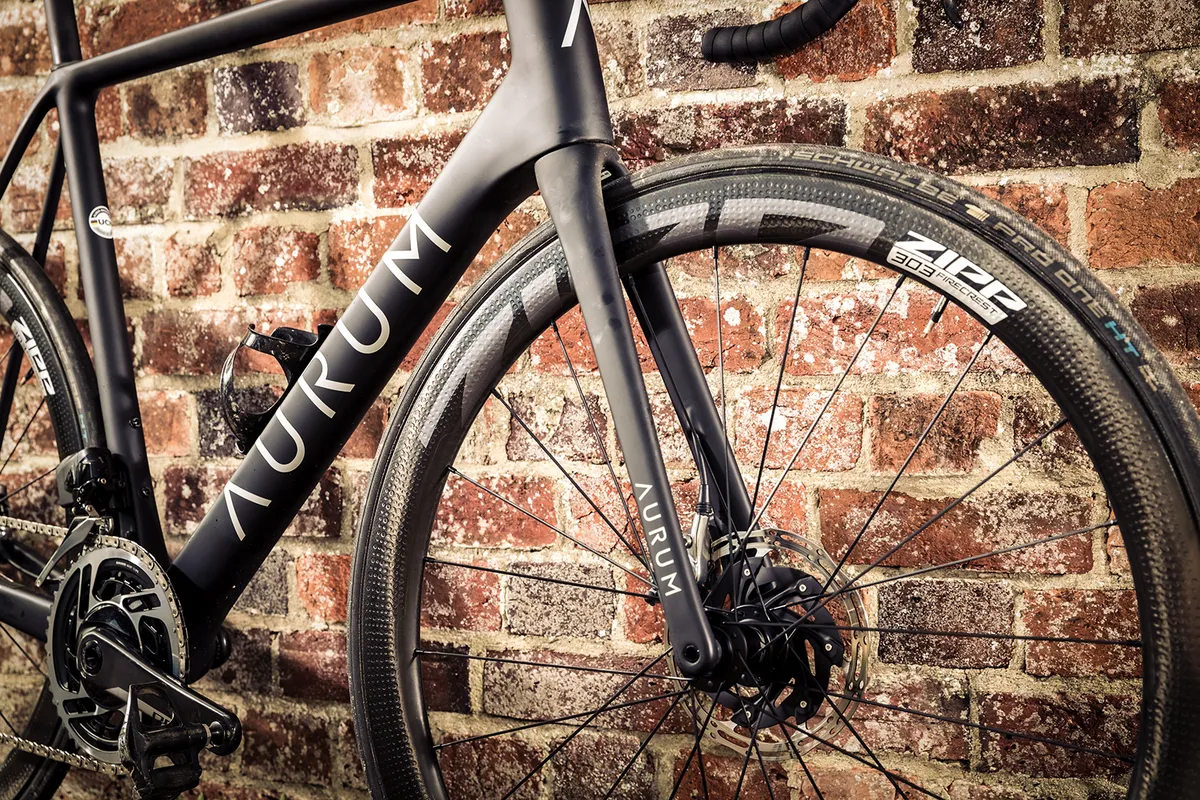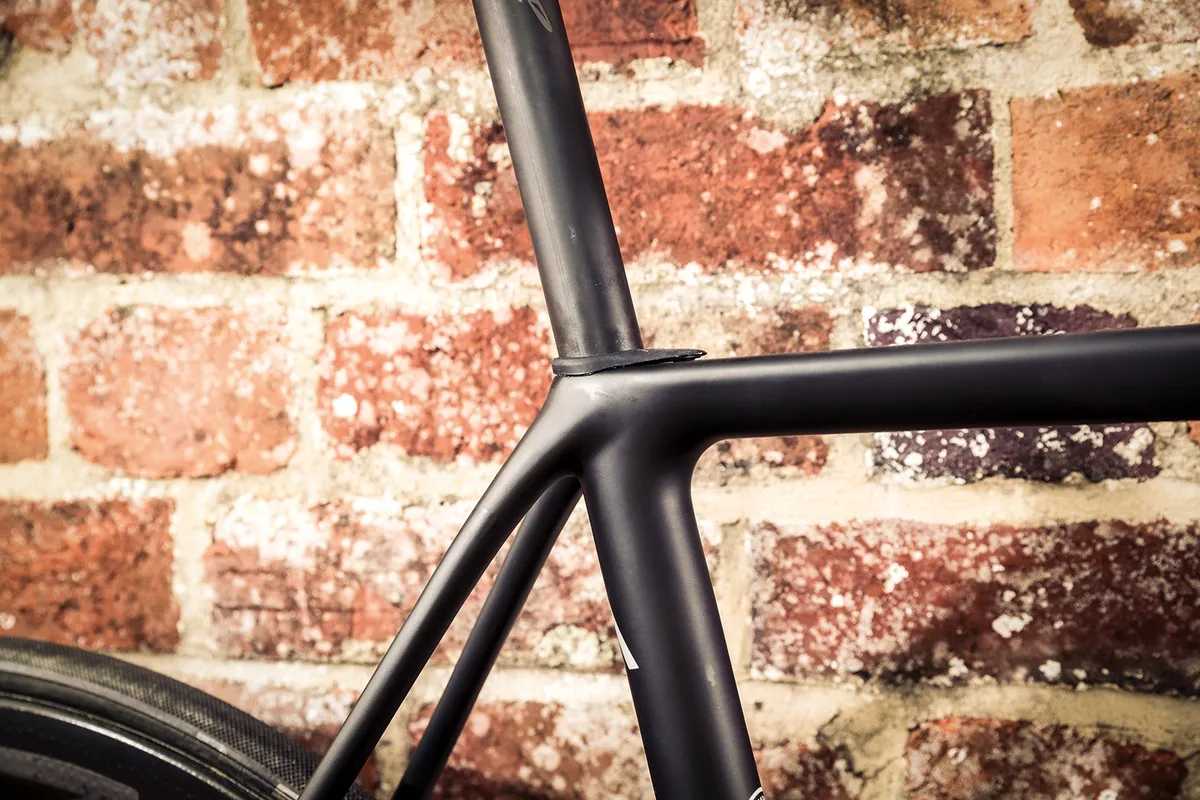Alberto Contador and Ivan Basso are two former professional riders with big reputations and multiple Grand Tour wins between them. And with their collective 31 years of racing, El Pistolero and Ivan the Terrible have the experience, they believe, to launch their new bike brand, Aurum, into the very crowded and technically advanced realm of modern road (super)bikes.
Aurum is Latin for gold and the name Magma is inspired by Mount Teide on the Spanish island of Tenerife where much of the developmental test riding of this bike took place.
Core to the new bike’s creation, says Aurum, was input by the two owners. The goal, as you’d expect, is to produce the fastest all-round road bike.
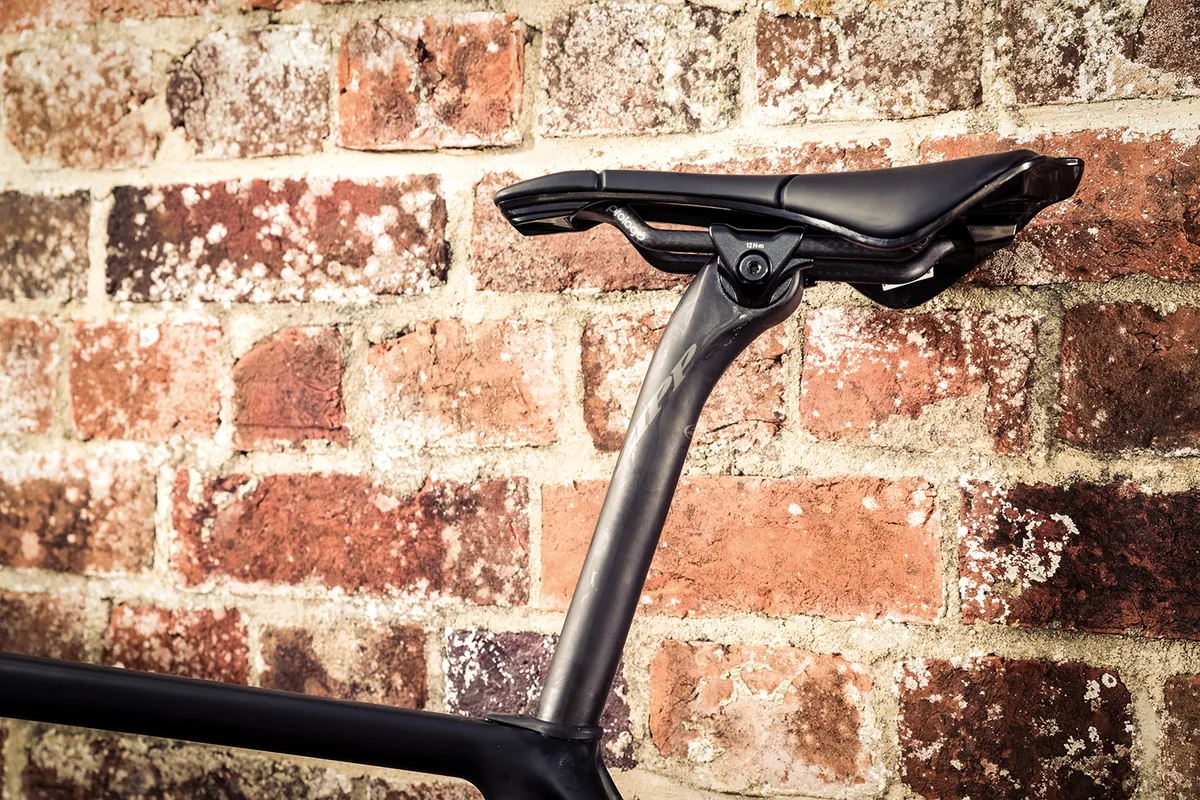
Aurum Magma Zipp frame
So you’d anticipate a cutting-edge, aero-optimised, fully integrated machine following the lines of the latest models from BMC, Specialized or Cannondale. In fact, Aurum has delivered a much more nuanced design.
The bike’s shape draws inspiration from road bikes of the duo’s race days; the two-triangle design is reminiscent of Basso’s Cannondale SuperSix EVO or Contador’s pre-aero Trek Madone. But unlike those round-tubed classics, the Magma has gained aerodynamics where needed, according to Aurum.
The front end is all about aero, with the head tube and down tube both using NACA (US agency National Advisory Committee for Aeronautics) profiles.
The aero profiles have had the long extended tails chopped. The kammtail has been seen on many bikes, including past guises of the Trek Madone. These D-shaped tubes ‘cheat’ the air into acting as if the long tapered tail was in place, making for less drag. It’s also strong torsionally and light, too.
The back end of the bike eschews aerodynamics in favour of ride dynamics. Aurum argues that the back end of the bike has disrupted airflow from the rider so it’s better to concentrate on ride feel and responsiveness rather than ‘cheating’ the air.
It claims that a standard rear triangle, where the seatstays meet the seat tube at the junction with the top tube, achieves this goal far more readily than being dropped low, such as the latest bikes from Specialized or Cannondale.
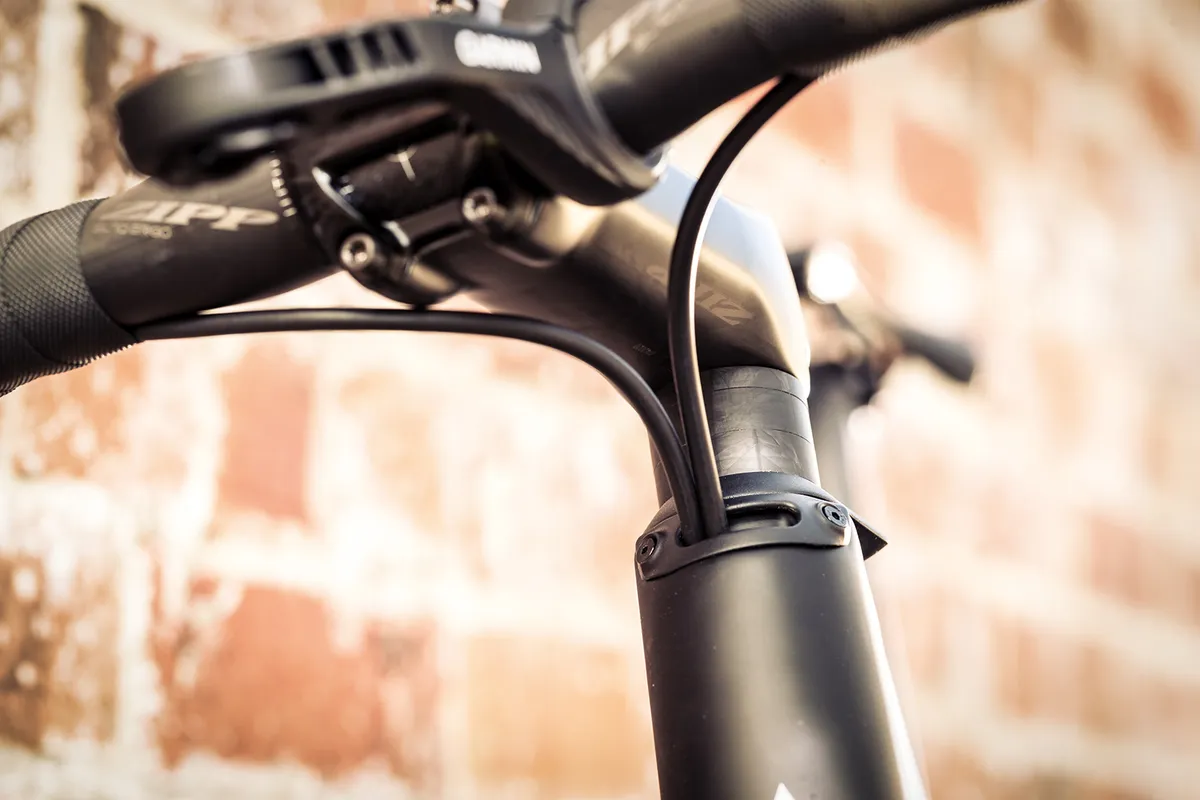
The head tube features internal cable routing called the ‘head tunnel’, which Aurum claims is a more simple and lighter design than most.
The head tunnel is essentially a slot that runs down the front of the head tube housing the brake hoses internally, which channels them into the frame and fork for a clean look.
It also means you can run a standard headset and any bar-and-stem combination you fancy. This is something Basso and Contador agreed on; throughout their careers, both wanted the freedom to choose bar-and-stem combos because they had issues with restrictive one-piece designs.
Aurum Magma Zipp builds
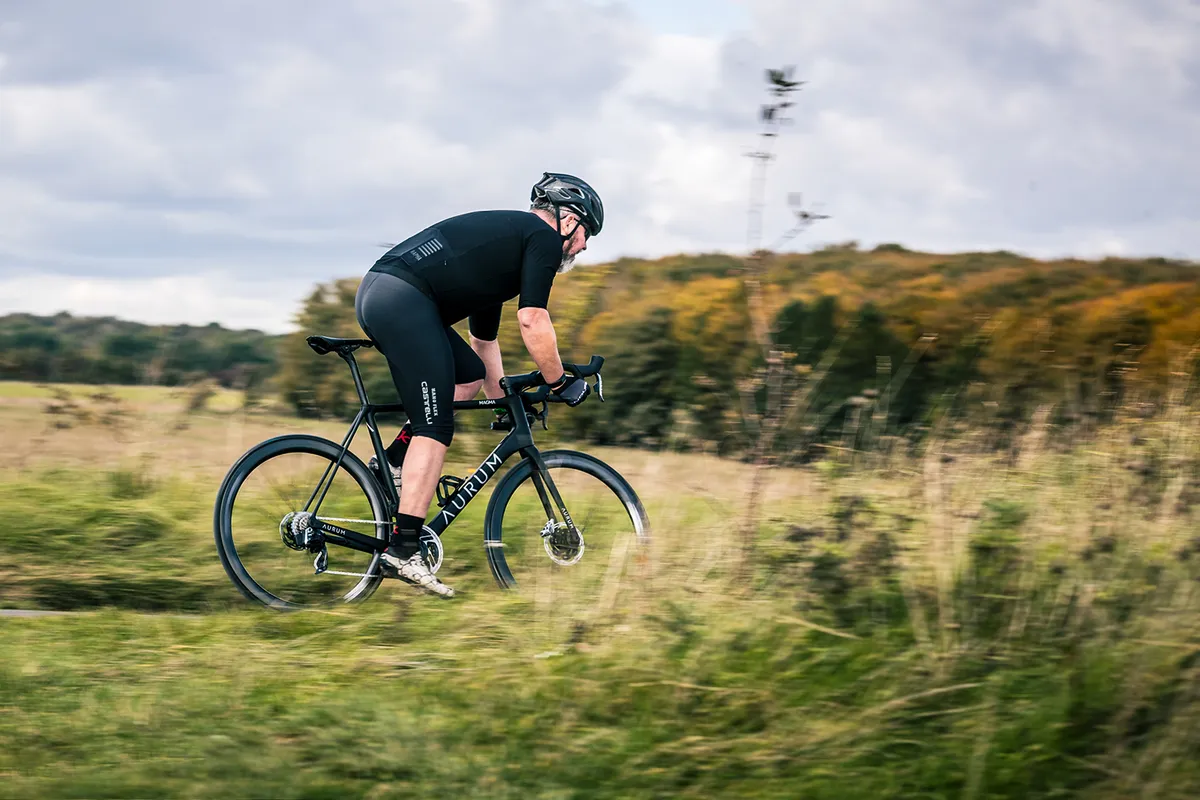
The Magma comes in three pure superbike builds.
There’s a Lightweight build with the German brand’s wheels, bar, stem and seatpost, plus Shimano Dura-Ace Di2; an Enve build with the Utah-based carbon expert’s suite of components plus, again, Dura-Ace Di2; and the bike tested here, on which Indianapolis’s finest, Zipp, provides the new 303 Firecrests and SL carbon components, plus SRAM Red AXS with the power meter option in place.
The 805g frame is built from six different types and grades of carbon fibre and multiple resins to tune the frame’s character, adding compliance where needed (seatstays and top tube) and essential stiffness through the drivetrain.
Aurum Magma Zipp ride impressions
As soon as you start to spin the pedals, the Magma feels special. The lightness through the bike is admirably balanced with incredible levels of stiffness, making for a bike that effortlessly projects forward with every pedal stroke. It also climbs with such responsiveness that I actively looked for hills when out on test rides.
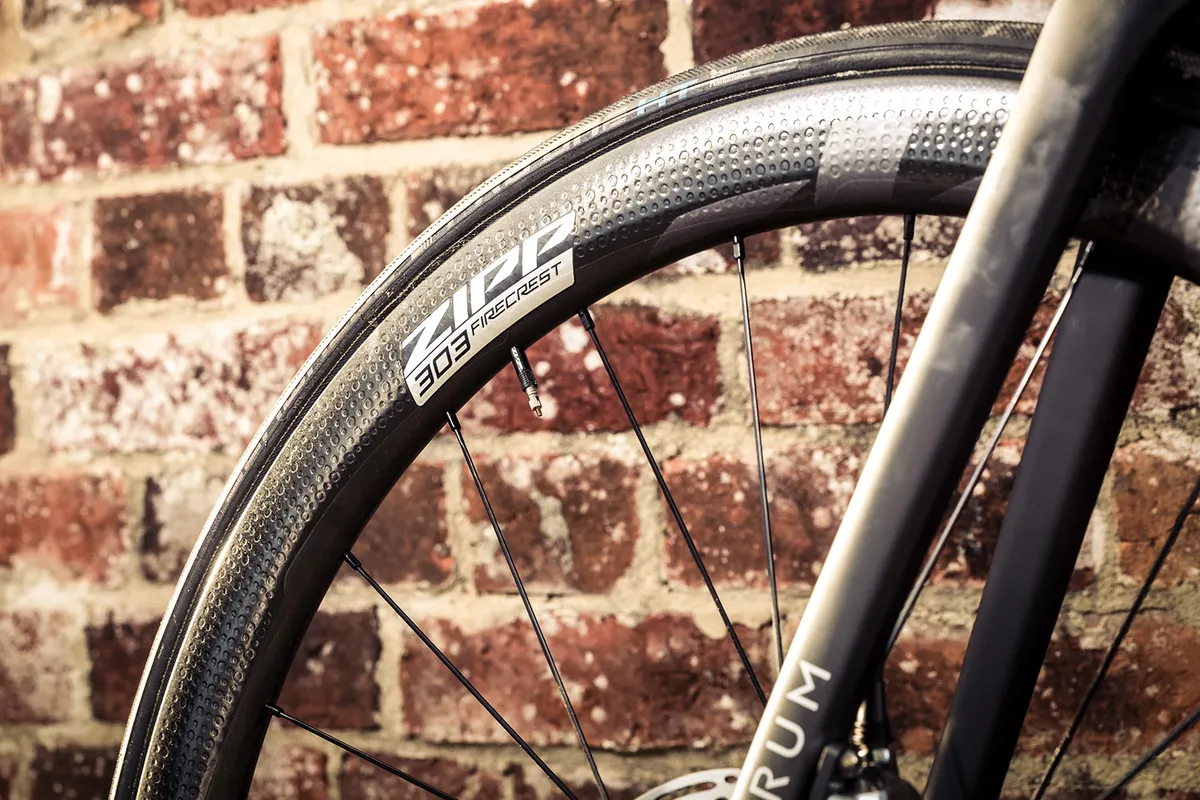
The feel as you roll across tarmac is one of firmness but, just like the stable of bikes that inspired the Magma, it isn’t harsh even on broken surfaces.
My test bike was shod with Zipp 303 tubulars rather than the production bike’s 303 Firecrest tubeless. The switch to tubeless means a rim that’s a little wider. This will shape the tyre differently and, in my experience, does add a bit more compliance, plus the frameset is capable of running up to a 30mm-wide tyre.
The drivetrain is SRAM’s finest, simple-control wireless AXS system with a 12-speed range that’s the equivalent of a racy 52/36, 10-33.
The Red group here includes the crank spider-based Quarq power meter option. SRAM’s Red hydraulic brakes offer plenty of stopping power and, reassuringly, remained noise-free once the pads and discs had bedded in.
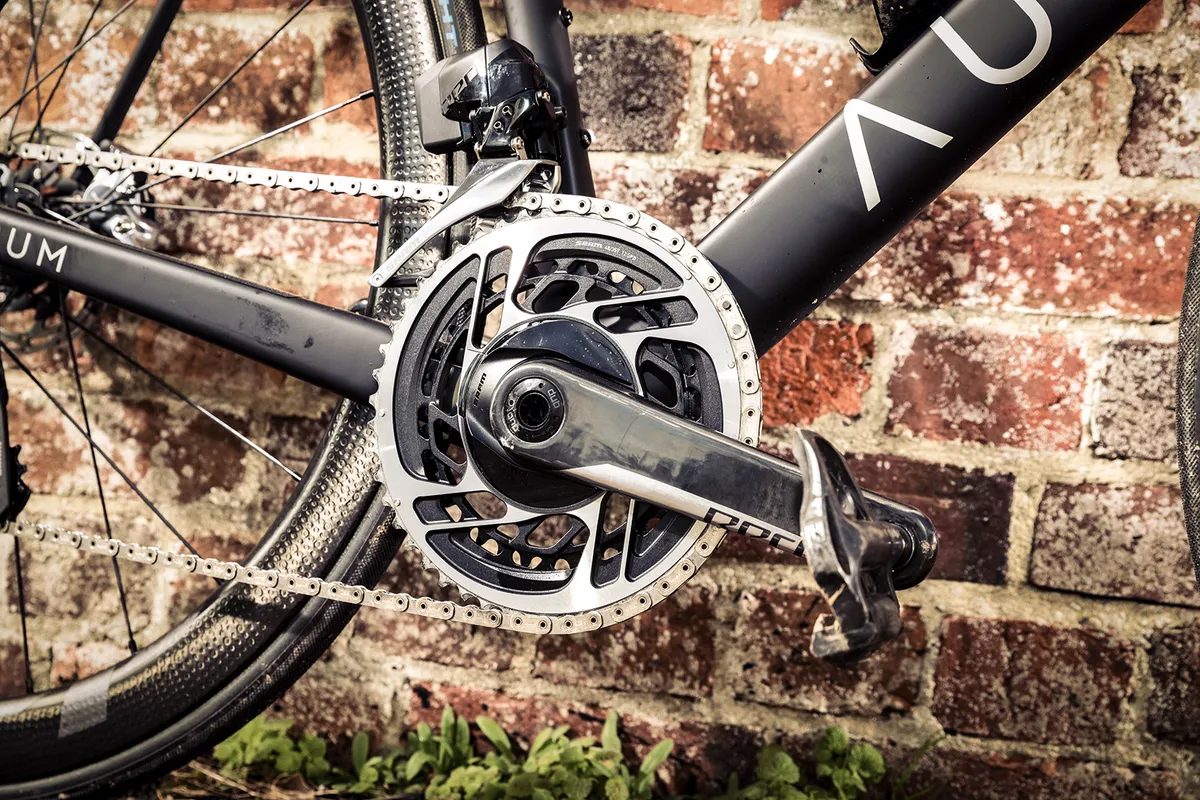
The contact points on the Magma are all of premium quality. Up front, Zipp’s carbon SL stem is rock-solid stiff, while the accompanying SL 70 Ergo carbon bar has been designed to match the SRAM shifters perfectly. The bar’s mid-length 70mm reach and 128mm drop is ideal for this bike – not so deep that you’re overstretched.
Out back, the carbon post has 20mm of offset, and the unidirectional construction offers compliance when combined with the leverage of the offset.
Prologo’s classic Scratch saddle is both light in its Nack (carbon) form and comfortable with it, thanks to its multi-density padding and multi-flex zones on the hull.
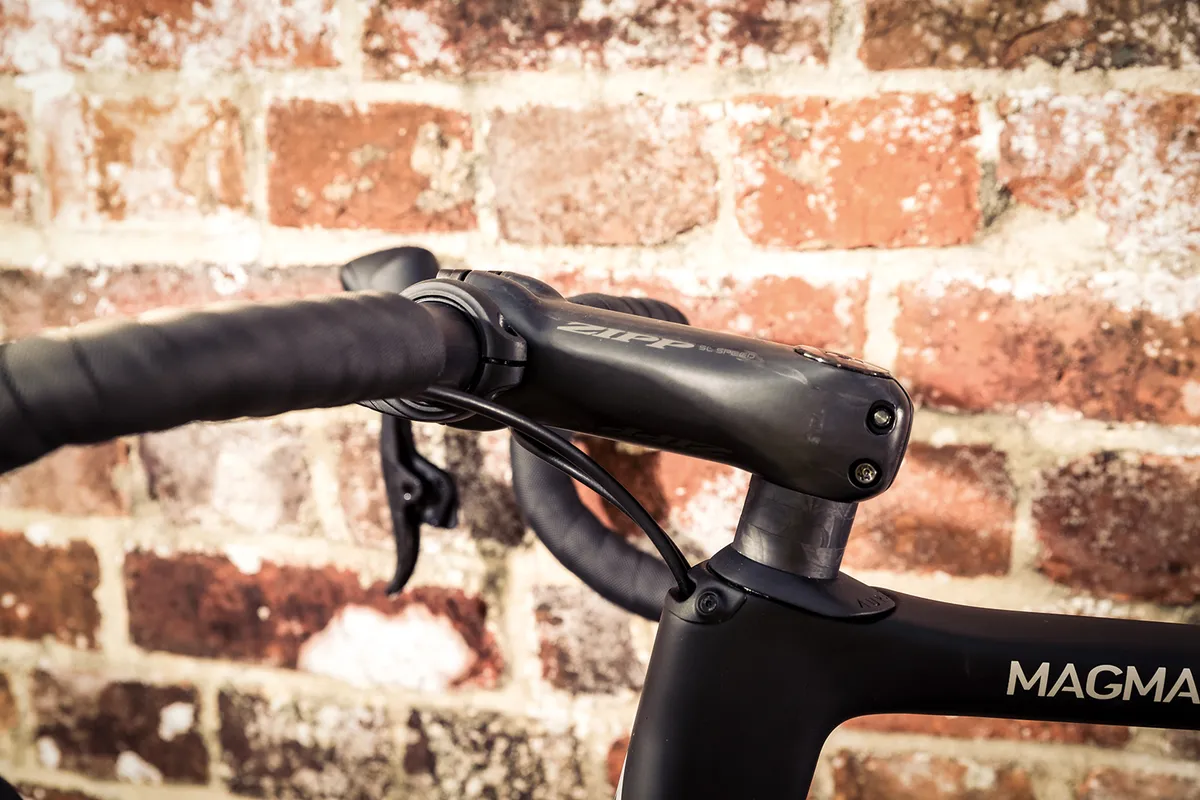
As mentioned, the ride position is pure race heaven with that long, low but sustainable position secured via a 400mm reach and 589mm stack (on my 58cm test bike).
The wheelbase is 1,008mm with short-as-they-dare-on-a-disc-equipped-bike 410mm chainstays. The head angle is a steep 73 degrees and the fork offset a tight 44mm.
We don’t need to overly concern ourselves with those numbers. Just rest assured that the Magma is as rapid-handling and nimble as modern race-orientated bikes get.
| | 50 | 52 | 54 | 56 | 58 | 61 |
|---|---|---|---|---|---|---|
| Seat angle (degrees) | 74 | 73 | 73 | 73 | 73 | 73 |
| Head angle (degrees) | 71.8 | 71.6 | 73 | 73 | 73 | 73 |
| Chainstay (cm) | 40.7 | 40.7 | 41 | 41 | 41 | 41 |
| Seat tube (cm) | 45.3 | 48 | 50.4 | 52.6 | 54.7 | 57.3 |
| Top tube (cm) | 51.5 | 53.6 | 55.1 | 56.5 | 58 | 59.6 |
| Fork offset (cm) | 5 | 5 | 4.4 | 4.4 | 4.4 | 4.4 |
| Trail (cm) | 6 | 6 | 5.9 | 5.9 | 5.9 | 5.9 |
| Bottom bracket drop (cm) | 7.4 | 7.1 | 7.1 | 7.1 | 7.1 | 7.1 |
| Wheelbase (mm) | 965 | 980 | 979 | 993 | 1,008 | 1,024 |
| Standover (cm) | 72.8 | 75 | 78.2 | 80.3 | 82.6 | 85 |
| Stack (cm) | 50.5 | 52.5 | 54.5 | 56.7 | 58.9 | 61.5 |
| Reach (cm) | 37 | 37.6 | 38.4 | 39.2 | 40 | 40.8 |
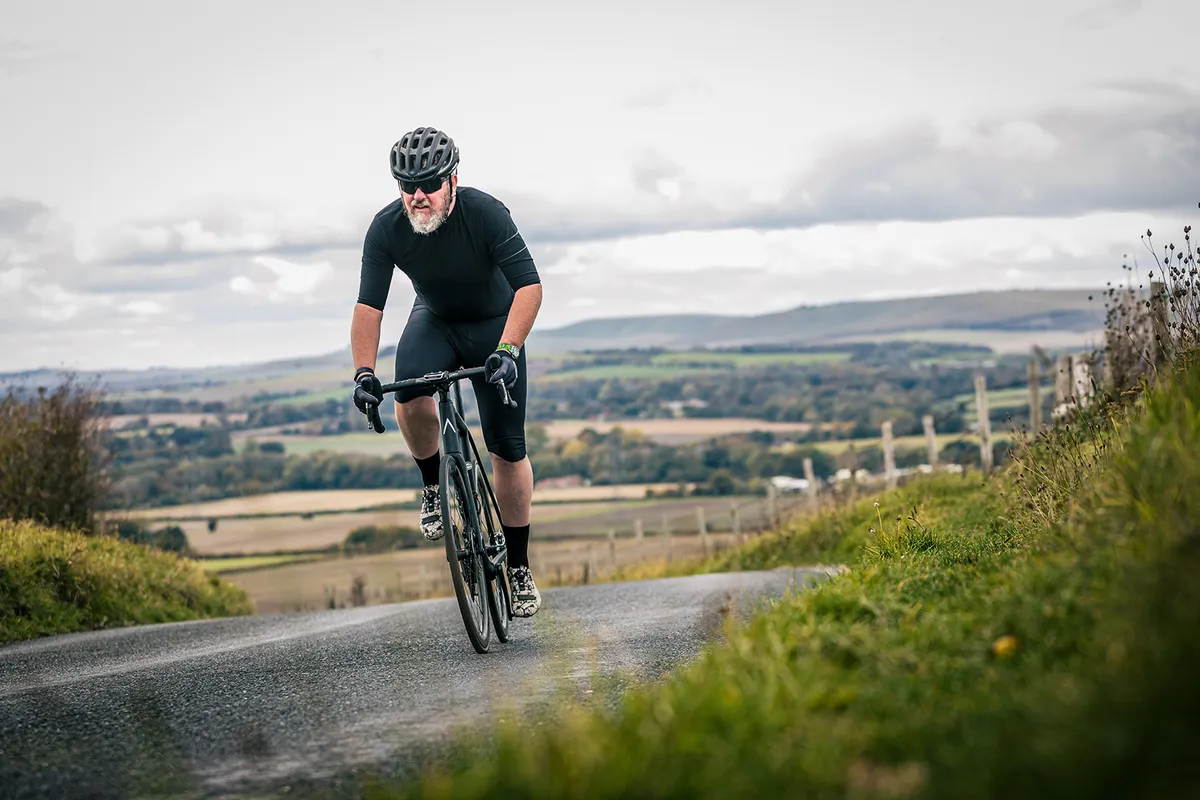
The finish is understated to the point of anonymity. Available in matte black and metallic light blue, a bike that’s this unassuming is a good thing for some of us. Others, however, may want to shout about the fact that they’re riding something special.
At current exchange rates, the Magma is around £8,700 – a whole heap of cash to spend on an unproven brand. While Contador and Basso seem to have made the bike that they want to ride, success at this level remains tough and is in no way assured.
Product
| Brand | Aurum |
| Price | 9799.00 EUR,8650.00 GBP |
| Weight | 6.9100, KILOGRAM (58cm) - |
Features
| Fork | Carbon |
| br_stem | Zipp SL speed carbon |
| br_chain | SRAM Red |
| br_frame | Carbon |
| Tyres | Schwalbe Pro One Evo 25mm |
| br_brakes | SRAM Red hydraulic disc |
| br_cranks | SRAM Red AXS with power meter, 48/35 |
| br_saddle | Prologo Scratch M5 Nack |
| br_wheels | Zipp 303 NSW tubular disc (test bike – production bikes get the tubeless version) |
| br_shifter | SRAM Red |
| br_cassette | SRAM Red |
| br_seatpost | Zipp SL Speed 20mm offset carbon |
| br_handlebar | Zipp SL 70 Ergo carbon |
| br_availableSizes | 50, 52. 54, 56, 58, 61cm |
| br_rearDerailleur | SRAM Red Etap AXS |
